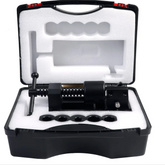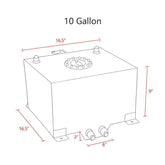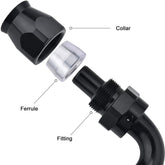Are wheel spacers safe to use?
Wheel spacers can enhance your vehicle's stance and improve handling by increasing the track width, but safety is crucial. It is recommended to follow these key points:
- Choose wheel spacers made from strong materials like aluminum alloy or high-quality steel to ensure durability.
- Use the correct size spacers to avoid alignment issues and promote even tire wear.
- Follow the wheel adapter's specifications and use the proper torque setting during installation.
- Regularly check for signs of damage, such as cracks, corrosion, or loose bolts.
- Be mindful of aggressive driving or heavy loads that may increase stress on the spacers.
By following these key points, you can safely use wheel spacers while enjoying their benefits.
How long does a wheel spacer last?
If properly maintained, wheel spacers can last indefinitely without replacement. However, their lifespan varies based on material quality, driving conditions, and installation. Car owners must regularly check wheel spacers for signs of wear or damage.
What are the negative effects of spacers?
Wheel spacers will result in higher rolling resistance, which can affect fuel efficiency.
The added distance between the wheel and the hub can result in a slight loss of power, affecting acceleration.
Improperly installed spacers can change the vehicle's handling characteristics, leading to instability or reduced responsiveness.
Spacers can place additional stress on suspension and steering components, leading to premature wear.
Using spacers requires a realignment of the wheels, and misalignment causes uneven tire wear and affects performance.
If not balanced correctly, spacers can cause vibrations at higher speeds, impacting driving comfort.
Are wheel spacers illegal in the US?
Wheel spacers are generally legal in the US, provided they are used responsibly. As long as you don’t make the wheels protrude excessively from the hub assembly, using wheel spacers on your vehicle is typically acceptable. However, regulations can vary by state, so it is advisable to check the latest local laws before making any modifications. Here are the regulations for some states:
- California: Legal, but tires must stay within the body width. If they do, it may be considered illegal and can affect passing vehicle inspections.
- Texas: Wheel spacers are permitted as long as they do not compromise vehicle safety or handling, especially during turns and braking.
- Florida: Using wheel spacers is allowed, but tires must remain within the vehicle’s body width to comply with legal standards.
- New York: Wheel spacers are legal, but tires cannot extend beyond the edges of the vehicle. Violations can lead to fines or failure during inspections.
- Illinois: Wheel spacers are allowed, but they must maintain vehicle stability and safety. Improper use can lead to legal issues.
Conclusion
In summary, wheel spacers enhance your vehicle's stance and handling when used correctly. Prioritize safety by selecting high-quality materials, ensuring proper sizing, and following installation guidelines. Regularly inspect for wear and damage to maintain performance and longevity.
While wheel spacers are generally legal across the US, be aware of state-specific regulations to avoid issues. By following these best practices, you can enjoy the benefits of wheel spacers while keeping your vehicle safe and compliant.
See also Pros And Cons Of Wheel Spacers









